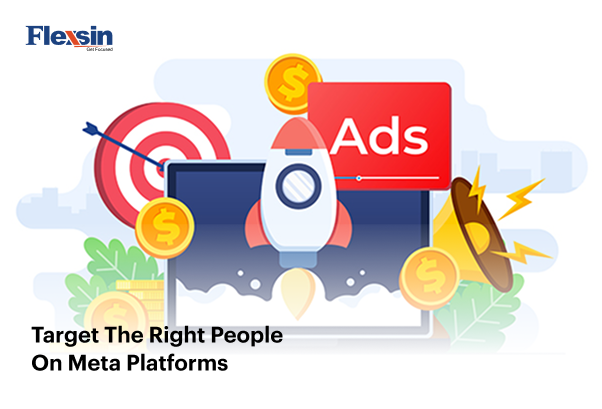Despite spending thousands on Meta Ads, 63% of businesses fail to achieve their target ROAS. The problem? Most treat Meta Ads as a ‘set-and-forget’ system rather than a dynamic, data-driven engine. Here’s how expert Meta Ads consulting transforms underperforming campaigns into profit machines.
Meta Ads (Facebook & Instagram) dominate digital advertising, but their complexity—from algorithmic bidding to creative fatigue—often leaves businesses burning budgets without results. This guide unlocks data-backed strategies, 2025 trends, and consulting-driven solutions to turn Meta Ads into your top revenue channel.
How Meta Ads Consulting Maximizes Your ROI in 2025
Most advertisers lose money by misunderstanding Meta’s ad auction. Key consulting interventions:
Bid Smart, Not Hard:
Consultants analyze your ad relevance score (a Facebook Auction ranking factor) to tweak bids. Example: A Shopify brand reduced CPC by 40% by shifting from “lowest cost” to value-based bidding.
Audience Overlap Audits:
Overlapping audiences trigger internal competition, skyrocketing CPMs. Tools like Meta’s Audience Overlap Report (via Ads Manager) identify redundancies.
Dayparting for Algorithm Syncing:
Schedule ads to align with Meta’s AI delivery peaks (e.g., 7–9 PM local time).
1. Creative That Converts: The 3:2:1 Rule
Meta’s algorithm prioritizes engaging creatives. Flexsin’s Meta Ads Consultants enforce the 3:2:1 Framework:
- 3 Variants per Ad Set: Test UGC, carousels, and vertical videos
- 2 Hook Types: Problem-agitate (“Tired of low ROAS?”) vs. benefit-driven (“Double conversions in 30 days”)
- 1 CTA: Clear, singular (e.g., “Get Demo” > “Learn More”)
2. Scalability Through AI & Automation
2025’s game-changer: Automated Rules + Predictive Audiences. Consultants deploy:
Dynamic Creative Optimization (DCO): Meta’s AI mixes headlines, images, and CTAs to find top combos.
Lookalike Expansion: Start with a 1% lookalike, then layer interest exclusions (e.g., exclude existing buyers).
Churn Prediction Models: Tools like Zapier sync Meta data with CRM to pause ads for at-risk customers.
3. The 3 Meta Ads Trends Reshaping 2025 – And How to Leverage Them
The digital advertising landscape is evolving at breakneck speed. What worked in 2024 may already be outdated. To stay ahead, businesses must adapt to Meta’s latest innovations – or risk falling behind competitors who leverage these shifts early.
Meta Ads consulting doesn’t just optimize existing campaigns; it future-proofs them. Below, we break down the three most impactful trends for 2025 and how expert guidance turns them into revenue opportunities.
Trend #1: AI-Powered Ad Optimization Goes Mainstream
Meta’s AI tools are no longer optional, they’re essential for competitive performance. The platform now relies heavily on machine learning for everything from audience targeting to creative adjustments. But without strategic oversight, AI can waste budget on the wrong optimizations.
1. Advantage+ Campaigns: When to Use Them (And When to Avoid)
Advantage+ automates audience targeting and creative delivery, but it’s not a magic bullet.
Best for: Scaling proven creatives, broad audience testing.
Avoid when: Niche B2B targeting or strict brand safety requirements.
Consultant tip: Layer Advantage+ with exclusion audiences to prevent irrelevant placements.
2. Predictive Bidding: How to Let AI Work for You (Not Against You)
Meta’s AI bidding can either maximize conversions or drain budgets on low-intent clicks.
Fix: Set bid caps for high-value actions (e.g., purchases over $100).
Case study: An e-commerce brand reduced cost-per-purchase by 35% by combining AI bidding with manual bid adjustments during peak sales hours.
3. The Rise of AI-Generated Creatives – Should You Use Them?
Meta now offers AI-generated ad variations, but quality varies.
Proceed with caution: AI excels at A/B testing minor tweaks (e.g., background colors) but struggles with nuanced messaging.
Consultant fix: Use AI for rough drafts, then refine with human copywriting.

Trend #2: Privacy-Centric Targeting Demands New Strategies
With iOS updates and regulatory changes, traditional tracking methods are fading. Businesses must adapt—or face skyrocketing customer acquisition costs.
The decline of third-party cookies and tighter data restrictions mean advertisers must rely on Meta’s first-party solutions. Fortunately, consulting experts have developed workarounds that maintain precision without violating privacy norms.
1. First-Party Data: The New Goldmine
Solution: Build Custom Audiences from email lists, website visitors, and app activity.
Pro tip: Use offline conversion tracking to tie ad spend to real-world sales.
2. Contextual Targeting Makes a Comeback
Why it matters: Interest-based targeting is becoming less reliable.
Fix: Use Meta’s keyword targeting (currently in beta) to place ads alongside relevant content.
3. Zero-Party Data: The Next Frontier
Strategy: Run polls & quizzes to collect user-provided preferences.
Example: A beauty brand increased ROAS 2X by segmenting ads based on quiz responses.
Real-World Success Stories & Strategic Takeaways
Between emerging AI tools and privacy changes, Meta Ads success in 2025 requires more than just tactical adjustments – it demands strategic reinvention. These case studies demonstrate how businesses transformed challenges into measurable growth through expert Meta Ads consulting.
Case Study #1: From 1.2x to 3.8x ROAS in 90 Days (E-Commerce)
A premium skincare brand was stuck at a 1.2x return on ad spend, with customer acquisition costs eating 68% of their margin. Flexsin Technology’s consulting team implemented a 3-phase solution:
The Problem: Leaky Funnel & Wrong KPIs:
• Ads optimized for “add to carts” but not purchases
• Lookalike audiences based on low-value buyers
• No systematic retargeting strategy
The Consulting Interventions:
Funnel Repair: Created separate campaigns for TOF (video views), MOF (landing page visitors), and BOF (cart abandoners)
Value-Based Lookalikes: Built audiences from customers with LTV > $300
Dynamic Creative Refresh: Automated new creative testing every 7 days
The Result:
- 217% increase in ROAS (1.2x → 3.8x)
- 42% lower CPA on premium products
- 19% higher repeat purchase rate from retargeting
While e-commerce brands benefit from direct response tactics, B2B companies face longer cycles and more complex decision-making units. The next case study reveals how we adapted Meta Ads for high-ticket service sales.
Case Study #2: Generating $1.2M Pipeline (B2B SaaS)
A cybersecurity SaaS company struggled to move beyond lead gen to actual pipeline creation. Their $8,000/month ad budget was generating unqualified signups.
The Diagnosis: Mismatched Campaign Objectives:
• Campaigns optimized for ebook downloads (low intent)
• No integration between Meta Ads and Salesforce
• Generic ad copy failing to address enterprise concerns
The Consulting Solution:
Lead Scoring Integration: Connected Meta CAPI to HubSpot to filter out junk leads
Account-Based Retargeting: Served case study ads to employees at target accounts
Offer Ladder: Created separate flows for technical users vs. economic buyers
The Impact:
- 68% reduction in cost per SQL
- $1.2M pipeline generated in 6 months
- 9 enterprise deals closed from ad-originated leads
Customized Meta Ads Action Plan
Based on these successes and emerging trends, here’s your roadmap:
1: Immediate Priorities (Next 30 Days)
• Audit your current ad relevance scores
• Implement at least one AI automation (Advantage+ or DCO)
• Set up proper conversion tracking
2: Mid-Term Plays (Next 90 Days)
• Build first-party data assets
• Develop a creative testing framework
• Integrate ads data with your CRM
3: Long-Term Competitive Edge
• Test Meta’s new AI tools early
• Develop zero-party data strategies
• Explore full-funnel attribution models
Flexsin’s performance-led Meta Ads engine has been instrumental in year-on-year cost-per-acquisition drops and scalable sales uplift for our retail and eCommerce clients, including Sacha Cosmetics, Austpek Bathrooms, Brake World, Aussie Digital, and many more.
Flexsin has assisted its retail & eCommerce clients viz. Brake World, Sacha Cosmetics, Aussie Digital, Austpek Bathrooms, and many more, with precision targeted Google Ads that slash cost per acquisition while scaling high value sales growth.
Don’t let 2025’s changes leave your ads behind. Schedule your free Meta Ads strategy session with Flexsin’s Technology’s certified consultants and receive a custom optimization plan within 48 hours.



 Chiranjit Paul
Chiranjit Paul